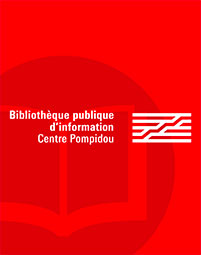Recherche avancée :
- Editeur : MoMA
Documents en rayon : 28
par Rubin, William S.
MoMA
1968
-
Disponible - 704-732 RUB
Niveau 3 - Arts
par Rubin, William S.
MoMA
1988
-
Disponible - 70"19" STEL.F 2
Niveau 3 - Arts
par Johns, Jasper (1930-....)
MoMA
1996
-
Disponible - 70"19" JOHN.J 1
Niveau 3 - Arts
par Da̧browski, Magdalena ; Galassi, Peter (1951-....) ; Dickerman, Leah (1964-....)
MoMA
1998
-
Disponible - 70"19 RODT 2
Niveau 3 - Arts
par Storr, Robert (1949-....)
MoMA
2002
-
Disponible - 70"19" RICH.G 2
Niveau 3 - Arts
MoMa
2002
-
Disponible - 72.27 CHA
Niveau 3 - Arts
par Fineberg, Jonathan David
Yale University Press ; MoMA
2004
-
Disponible - 70"19" CHRI 2
Niveau 3 - Arts
par Hauptman, Jodi ; Van Zuylen, Marina ; Figura, Starr (1963-....)
Moma, Museum of modern art
2005
-
Disponible - 70"18" REDO 2
Niveau 3 - Arts
MOMA
2005
-
Disponible - 70"20" DEMA 2
Niveau 3 - Arts
par Bergdoll, Barry
Museum of modern art (MOMA)
2008
-
Disponible - 721.75 HOM
Niveau 3 - Arts
MOMA
2008
-
Disponible - 70"19" MIRO 2
Niveau 3 - Arts
MoMA
2010 -
-
Disponible - 770 CART
Niveau 3 - Arts
Résumé : Un album rétrospectif de la carrière de photographe d'Henri Cartier-Bresson publié à l'occasion de l'exposition de New York.
MOMA ; Gallimard
2011 - 2009 -
-
Disponible - 791.24 WIS
Niveau 3 - Cinéma documentaire
Résumé : Avec plus de 40 longs métrages, Fred Wiseman est aujourdhui une des icônes du cinéma documentaire américain. A côté de la présentation de ses films et de diverses contributions sur son oeuvre, le réalisateur évoque ses années de formation et son passage fortuit au cinéma en 1967.
par Butler, Cornelia H. (1963-....)
MoMa ; Fonds mercator
2011 -
-
Disponible - 70"19" SZAP 2
Niveau 3 - Arts
Résumé : Monographie sur A. Szapocznikow, dont la survie à l'Holocauste, le rapprochement au surréalisme et au pop art en font une artiste nourrie de la sensibilité de l'après-guerre européen. Cet ouvrage a été publié à l'occasion de l'exposition "Alina Szapocznikow, Sculpture Undone 1955-1972" organisé par le WIELS, Centre d'art contemporain, Bruxelles et le Musée d'art moderne, Varsovie en collaboration avec The Museum of Modern art, New York et le Hammer Museum, Los Angeles
par Bajac, Quentin ; Museum of modern art-Queens (New York, N.Y.).
MoMA
2015
-
Disponible - 77.6 MOM
Niveau 3 - Arts
par Bajac, Quentin ; Museum of modern art (New York, N.Y.).
MoMA
2016
-
Disponible - 77.4.6 MOM
Niveau 3 - Arts
par Meister, Sarah Hermanson ; Museum of modern art (New York, N.Y.). ; Kozloff, Max (1932-....)
MoMA
2017
-
Disponible - 77.4(73) HER
Niveau 3 - Arts
par Bajac, Quentin ; Museum of modern art (New York, N.Y.).
MoMA
2017
-
Disponible - 77.6 MOM
Niveau 3 - Arts
MOMA
2017 -
-
Disponible - 70"19" BOUR.L 2
Niveau 3 - Arts
Résumé : La 4e de couverture indique : ""Louise Bourgeois : An Unfolding Portrait" explores this celebrated artist's prints and books, a little known but highly significant part of Bourgeois's larger practice. Her copious production in these mediums - addressing themes that perennially occupied her, including memory, trauma, and the body - is examined here within the context of related sculptures, drawings, and paintings. This investigation sheds light on Bourgeois's creative process, which is uniquely and vividly apparent through the evolving states and variants of her prints ; seeing these sequences unfold is akin to looking over the artist's shoulder as she worked. Published in conjunction with an exhibition at The Museum of modern art, this catalogue features an insightful essay by curator (and longtime friend of the artist) Deborah Wye, examining Bourgeois's involvement with these mediums alongside the developments of her long life and career. Interviews with three of the artist's close collaborators further illuminate her artistic practice and output, some three hundred examples of which are presented in this volume."
par Velasco, David
Moma
2017
-
Disponible - 792.8 MICH 2
Niveau 3 - Arts
par Museum of modern art (New York, N.Y.). ; Ferreyros, Tessa ; Butler, Cornelia H. (1963-....) ; Platzker, David (1965-....) ; Cherix, Christophe (1969-....) ; Piper, Adrian (1948-....)
MOMA
2018 -
-
Disponible - 70"19" PIPE.A 2
Niveau 3 - Arts
Résumé : In 1996 Adrian Piper wrote, “It seemed that the more clearly and abstractly I learned to think, the more clearly I was able to hear my gut telling me what I needed to do, and the more pressing it became to do it.” Since the 1960s, this uncompromising artist and philosopher has explored the potential of Conceptual art—work in which the concepts behind the art takes precedence over the physical object—to challenge our assumptions about the social structures that shape the world around us. Often drawing from her personal and professional experiences, Piper’s influential work has directly addressed gender, race, xenophobia, and, more recently, social engagement and self-transcendence. Bringing together over 290 works, including drawings, paintings, photographs, multimedia installations, videos, and performances, the exhibition offers a rare opportunity to experience her provocative and wide-ranging artwork. Occupying the Museum’s entire sixth floor and the Marron Atrium, Adrian Piper: A Synthesis of Intuitions 1965–2016 charts the artist’s five-decade career, including early paintings inspired by the use of LSD; key projects such as Mythic Being (1973), in which Piper has merged her male alter ego with entries from her teenage journals; My Calling (Card) #1 and My Calling (Card) #2 (1986), business card–sized, text-based works that confront the reader’s own racist or sexist tendencies; and What It’s Like, What It Is #3 (1991), a large-scale mixed-media installation addressing racist stereotypes, which will be shown in the Marron Atrium.

 Les bibliothèques de prêt de la ville de Paris
Les bibliothèques de prêt de la ville de Paris
 Les bibliothèques universitaires
Les bibliothèques universitaires
 La BnF
La BnF
 L'encyclopédie Wikipédia
L'encyclopédie Wikipédia
 L'Encyclopædia Universalis
L'Encyclopædia Universalis
 La bibliothèque du film
La bibliothèque du film
 La bibliothèque du cinéma François Truffaut
La bibliothèque du cinéma François Truffaut
 La médiathèque musicale de Paris
La médiathèque musicale de Paris
 La médiathèque de la Philharmonie de Paris
La médiathèque de la Philharmonie de Paris

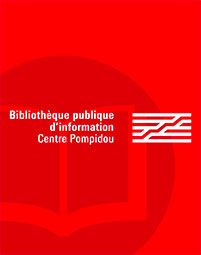


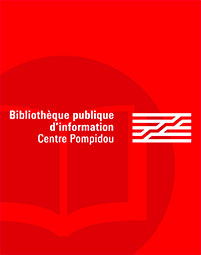
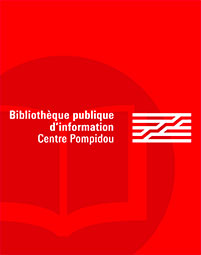




![The changing of the Avant-garde : visionary architectural drawings from the Howard Gilman collection : [exhibition, Museum of modern art, New York, October 24, 2002-January 6, 2003]](/imported_images/livre/couverture/0-87070-004-9.jpg)


![Thomas Demand : [exhibition, New York, Museum of modern art, March 4-May 30, 2005]](/imported_images/livre/couverture/0-87070-080-4.jpg)

![Joan Miro : painting and anti-painting, 1927-1937 : [exhibition, New York, Museum of modern art, November 2, 2008-January 12, 2009]](/imported_images/livre/couverture/978-0-87070-734-6.jpg)
![Henri Cartier-Bresson un siècle moderne : [exposition itinérante, New York, Museum of modern art, 11 avril-28 juin 2010, Chicago, The Art institute of Chicago, 24 juillet-3 octobre 2010, San Francisco, Museum of modern art, 30 octobre 2010-30 janvier 2011, Atlanta, High Museum of art, 16 février-29 mai 2011]](/imported_images/livre/couverture/978-2-7541-0469-2.jpg)
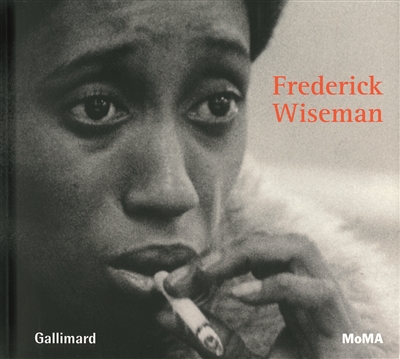
![Alina Szapocznikow : Sculpture Undone 1955 - 1972 : [exposition au WIELS Centre d'Art contemporain, Bruxelles, 10 septembre 2011 - 8 janvier 2012 ...; au Museum of Modern Art, New York, 7 octobre 2012 - 28 janvier 2013]](/imported_images/livre/couverture/978-90-6153-329-0.jpg)




![Louise Bourgeois : an unfolding portrait : prints, books, and the creative process : [exhibition, New York, The Museum of modern art, September 24, 2017 - January 28, 2018]](/imported_images/livre/couverture/9781633450417.jpg)
